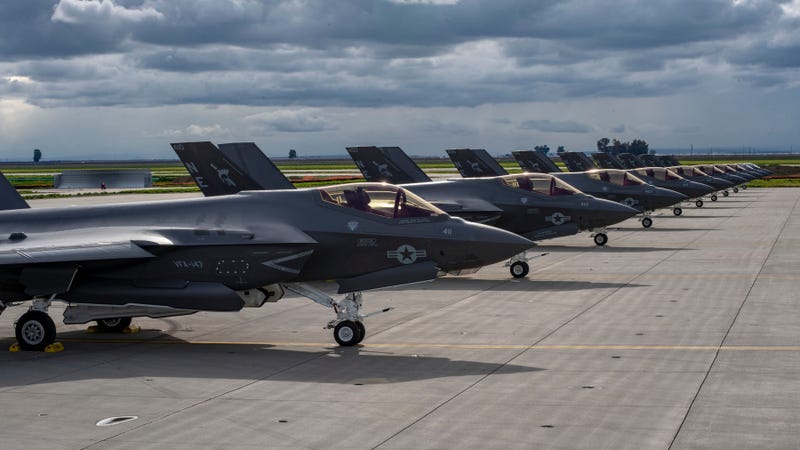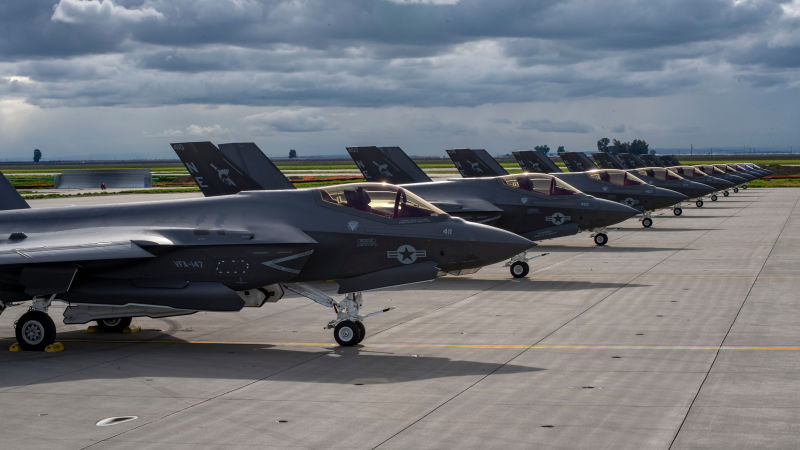
 Foxtrot AlphaTech and news from the world of modern defense.
Foxtrot AlphaTech and news from the world of modern defense.The F-35 Joint Strike Fighter is being sold to the U.S. military and the air forces of thirteen allies under a program worth approximately $1.4 trillion worldwide. It’s all been an utter boondoggle, but we’re stuck with it, even as there have been some signs of progress, with the latest variant going operations capable last week.
In this roundup of the state of the F-35 we cover the U.S. Navy’s recent declaration of a squadron of F-35Cs ready for combat, and the massive aircraft program appears poised to pick up a new customer, Singapore. Finally, the United States and Turkey are headed for a showdown over the latter’s planned purchase of Russian surface-to-air missiles, which could sink Turkey’s participation in the F-35 program.

United States (Navy)
The U.S. Navy finally announced its F-35 jets, the -C carrier-based variant, achieved Initial Operations Capable (IOC). The announcement, made on February 28th, comes three years later than originally forecast. The F-35C is on track to go to sea for the first time with a carrier strike group in 2021. The -C is the last variant to declare IOC, with the Marines declaring the -B model ready in July 2015 and the Air Force’s -A model in August 2016.
Advertisement
The F-35C is one of three F-35 variants. The F-35C features a slightly larger wing than the -A model made for the Air Force, a slightly longer range, and strengthened landing gear for the stress of aircraft carrier takeoffs and landings. The latest set of F-35Cs ordered from Lockheed Martin cost $107.7 million each.
Initial operations capable means that at least one F-35C squadron is, according to the Navy, “properly manned, trained and equipped to conduct assigned missions in support of fleet operations. This includes having 10 Block 3F, F-35C aircraft, requisite spare parts, support equipment, tools, technical publications, training programs and a functional Autonomic Logistic Information System (ALIS).” The Navy’s first squadron ready for war is Strike Fighter Squadron 147 (“Argonauts”), which completed aircraft carrier qualifications aboard the USS Carl Vinson in December 2018.
The F-35C was originally supposed to enter service in late 2015, making the jet more than three years late. This caused the Navy to keep flying older Hornet jets longer than anticipated, in turn causing readiness problems among both F/A-18C Hornet and F/A-18E/F Super Hornet fleets. Eventually the F-35C will equip two out of every four strike fighter squadrons deployed on U.S. Navy aircraft carriers, with F-35E/F Super Hornets making up the other two squadrons.
Advertisement

Turkey
Turkey’s F-35 purchase is in trouble due to Ankara’s plans to buy both the American Joint Strike Fighter and the Russian S-400 surface to air missile system at the same time. An early partner in the F-35 program, Turkey may not receive any jets at all if it goes ahead with the S-400 purchase.
Advertisement
Turkey is a Level III F-35 partner, meaning it invested $125 million in the development of the fighter in the 2000s with the promise it could purchase the jets when they were ready. Turkey planned to buy 100 of the conventional takeoff and landing version of the F-35, likely to replace the F-16.
For years, Turkey has sought to purchase a long-range surface-to-air missile system. During the Syrian Civil War Turkey was protected by Patriot missiles supplied by fellow NATO countries. Turkey has balked at the $3 billion-plus cost of the Patriot system and the lack of technology transfer to local industry and instead studied buying missiles first from China, then Russia. In December 2017 Turkey finalized a $2.5 billion dollar agreement to purchase the new S-400 missile system from Russia.
Turkey’s flirtation with China and Russia seemed like a negotiating tactic or a spurt of nationalism to prove Ankara’s independence from NATO, one that Turkey would later quietly back down from. It’s become very clear however that Turkey is serious. The U.S. is making it equally clear that Turkey will have to choose between the F-35 or S-400, but that it won’t get both.
Advertisement
U.S. officials, including the military head of NATO General Curtis Scaparroti, say the S-400 will lack “interoperability” with NATO aircraft. This is likely an allusion to the alliance’s Identify Friend or Foe (IFF) system that allows NATO air defenses to quickly tag NATO aircraft as friendly. The S-400 probably has only one way to “tag” NATO aircraft, and it isn’t friendly. Scaparroti also hinted that the U.S. is concerned that Turkish F-35 know-how could trickle back to Russia, improving the S-400’s ability to target stealth aircraft.
As for March 6, 2019, Turkish Leader Reycip Erdogan has vowed to go on with the S-400 purchase, which will probably lead to some other country eating Turkey’s F-35 lunch.

Advertisement
Singapore
That country could be Singapore. Singapore just announced its intent to purchase four F-35s for its air force, with an option to purchase another eight down the road. The southeast asian city state of 5.6 million maintains an impressively large and modern military force, fielding more combat power than Germany, including 60 F-16 Block 50/52 Fighting Falcons and 40 F-15SG Eagles. Singapore is looking at the F-35 as a potential replacement for the F-16 sometime around 2030.
An island where real estate is at a premium, Singapore is interested in the F-35s short takeoff and landing capabilities. This would allow the F-35s to better operate off civilian airfields and stretches of highway during wartime, dispersing the country’s air power to prevent it from being destroyed en masse, or being grounded due to damaged military air base runways. This could mean Singapore plans to buy the vertical takeoff and landing F-35C model flown by the U.S. Marines, UK, and Italy. Here’s a video from Exercise Torrent 2016, which saw Republic of Singapore Air Force F-15s and F-16s take off and land from a stretch of closed-off highway.













